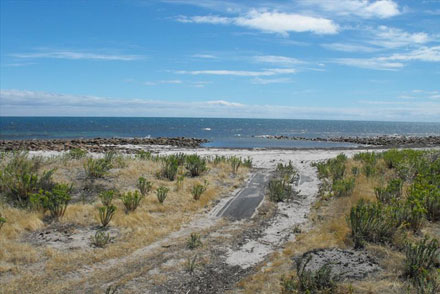
Kangaroo Island Plantation Timbers has received the initial results of coastal process modelling at Smith Bay, the site of the proposed KI Seaport. Source: KIPT and Timberbiz
The initial modelling, by the coastal process modeller Dr Ian Teakle, addressed the primary and secondary effects of the dredging needed to create a berth pocket and to level the seaward approaches.
The results are favourable, and show that:
- Smith Bay is subject to natural variation in water quality. Fine materials are periodically deposited from nearby watercourses and then re-suspended and dispersed during periods of wind-driven waves.
- The general area is subject to low velocity, underlying, longshore currents that are mainly driven by tidal effects in the Gulf St Vincent and Investigator Strait.
- The prevailing direction of these currents at Smith Bay is westwards, so that the net movement of any suspended particles is away from the intakes of the onshore abalone farm located several hundred metres to the east of the site.
- Notwithstanding the general westward current, in certain wind and tide conditions the currents run eastwards.
- The net effect is that construction work in water would need to be conducted during periods when there was no likelihood of significant eastwards currents, and with monitoring equipment in place. The coastal process modelling did not identify any significant or persistent effects on marine flora and fauna beyond the footprint of the development itself. This is readily achievable.
The next phase of modelling will address the effect of the inwater structures on coastal processes and will assist in optimising their design.
As previously announced, the company remains committed to delivering and operating the KI Seaport in a way that minimises negative impacts on water quality. The results show that this is achievable.
Full details of this and other studies will be available in the forthcoming Environmental Impact Statement for the project.





